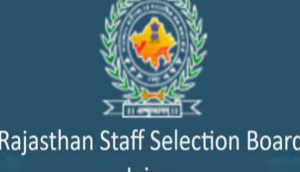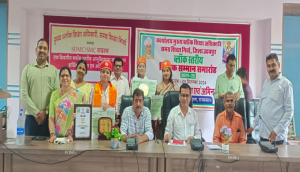
In it's Global Education Monitoring Report, 2016, UNESCO has claimed that India will be half a century late in achieving its universal education goals.
The statements and predictions made in the UNESCO Report are based on past linear trends and assumptions, informed the Minister of State (HRD), Upendra Kushwaha, on Thursday, in a written reply to a Rajya Sabha question. "It is expected that in view of the increased emphasis on programmatic initiatives aimed at reducing out of school children, current new policy and targeted interventions India may be able to achieve the goals of universal primary, lower secondary and secondary education much earlier," he said.
UNESCO's report also states that India will achieve universal primary education by 2050, universal lower secondary education (Grades VI - VIII in case of India) by 2060 and universal upper secondary education (Grades IX-XII in case of India) by 2085.
"UNESCO has informed that these projections have been made based on past trends. It has not involved the Ministry of Human Resource Development in this exercise," said a release from the ministry.
The minister informed that as per Unified District Information System for School Education (U-DISE) 2014-15, the Gross Enrolment Ratio at primary and upper primary level is 100.08% and 91.24% respectively. Near universal access has been achieved at the elementary level of schooling and 97% and 96.6% habitations have been covered with primary and upper primary schools respectively, he added.
"Overall there has been substantial growth in enrolment in secondary education (Grade IX-X) in the country. Total enrolment for Grades IX and X has increased from 30.7 million in 2009-10 to 38.3 million students in the academic year 2014-15. This represents a 24.8% increase over a five-year period. There has also been steady improvement in the Gross Enrolment Ratio (GER). The national average GER increased by 15.6 percentage points (from 62.9% in 2009-10 to 78.5 % in 2014-15). Accordingly, it is envisaged that the target of universal secondary (Grades IX-X) education will be achieved sooner than 2030," he added.
The Rashtriya Madhyamik Shiksha Abhiyan (RMSA) provides for universalisation of access to and improvement of quality at the secondary stage. As per UDISE 2014-15, the Gross Enrolment Ratio at secondary and higher secondary level is 78.51% and 54.21% respectively.







![BJP's Kapil Mishra recreates Shankar Mahadevan’s ‘Breathless’ song to highlight Delhi pollution [WATCH] BJP's Kapil Mishra recreates Shankar Mahadevan’s ‘Breathless’ song to highlight Delhi pollution [WATCH]](https://images.catchnews.com/upload/2022/11/03/kapil-mishra_240884_300x172.png)

![Anupam Kher shares pictures of his toned body on 67th birthday [MUST SEE] Anupam Kher shares pictures of his toned body on 67th birthday [MUST SEE]](https://images.catchnews.com/upload/2022/03/07/Anupam_kher_231145_300x172.jpg)






